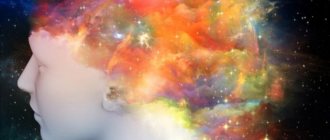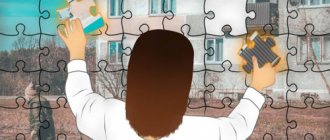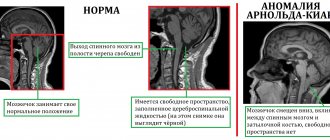Paraphrenic syndrome (paraphrenia) is one of the most severe forms of delusional disorder. Emil Kraepelin was the first to describe this disease at the beginning of the last century. According to the International Directory of Diseases (ICD-10), this syndrome belongs to paranoid schizophrenia.
The disease manifests itself in the form of delusions of grandeur and ideas of persecution. Patients consider themselves omnipotent, rich and successful people, at the center of grandiose events. A distorted perception of reality may be combined with visual and auditory hallucinations.
Paranoid, paranoid and paraphrenic syndromes - step by step from prudence to madness...
Service price
- HOSPITAL Day hospital5 000
- Day hospital with intensive care8,000
- 24-hour hospital (all inclusive, cost per day) 12,000
- 24-hour hospital (all inclusive, cost per day). Single occupancy24,000
- 24-hour hospital (all inclusive, cost per day). Single occupancy in a superior room 36,000
- Primary family counseling for relatives of patients undergoing inpatient treatment free of charge
- Group psychotherapy for relatives of patients undergoing inpatient treatment free of charge
- Group psychotherapy for 24-hour and day hospital patients free of charge
- Individual post for a hospital patient (if indicated)6,000
Paraphrenia is a fantastic delirium of “particularly large scope”, combined with increased (rarely decreased) mood. A more severe form of delusion than paranoia and paranoid.
Patients feel like rulers of people, planets and the Universe, centers of the struggle between good and evil, sources or conductors of divine forces. Paraphrenic syndrome is an indicator of a gross disruption of the brain and psyche.
Paraphrenia literally means “beside the mind” in Greek. It was first described by the famous German psychiatrist Emil Kraepelin in 1907 as a separate disease. However, to date, this is not considered a separate disease, but is a syndrome (a combination of several symptoms) that can develop in various mental disorders.
Epidemiology
Most often, paraphrenia affects men aged 18-29 years and women aged 23-33 years. Moreover, the risk of deviations increases significantly in spring and autumn during exacerbations of various diseases. The disorder is also more likely to occur in people who were born in the spring and winter.
In children, paraphrenic syndrome practically does not occur. The first mild signs of pathology can be detected only in adolescence, when the child develops psychosis and affective-delusional ideas.
It is impossible to calculate the number of all cases of the disease, since not every patient seeks help from a specialist. Usually people do not understand what is happening to them and generally do not pay attention to changes in their well-being. They are sure that they do not need any help. Others, on the contrary, go to see a therapist with complaints. But a general practitioner cannot always determine the presence of a disorder.
The following painful phenomena are characteristic of paraphrenia:
- A symptom of false recognition, when in unfamiliar people around them they see other, important persons participating in their lives.
- Fantastic delirium of grandeur.
- Increased mood (less often decreased), euphoria.
- Confabulations are false memories. The patient feels that he remembers certain events. However, in reality these events did not happen.
The causes of paraphrenia are gross disturbances of metabolic processes in the brain, overexcitation of subcortical structures.
Results and discussion
Acute paraphrenic state is a complex psychopathological formation, the core component of which is the syndrome of fantastic delusions -
sensual megalomaniac delirium with a plot of confrontation between opposing factions. Fantastic (antagonistic) delusions are combined with delusions of grandeur (megalomaniacal component) and delusions of persecution (persecutory component). The relationship between fantastic delusions and other components of the syndrome is an important psychopathological characteristic that determines the typological and clinical affiliation, treatment tactics and prognosis of an acute paraphrenic state.
In our work, 3 psychopathological variants of acute paraphrenic syndrome were identified: with dominance of sensory delusions (21 observations), with dominance of manifestations of Kandinsky-Clerambault syndrome (29 observations) and with dominance of confabulatory disorders (10 observations).
Acute paraphrenic states with dominance of sensory delirium
are characterized by a combination of the fantastic syndrome (antagonistic delusions) with pronounced affective disorders (usually mixed). In its dynamics, an acute paraphrenic state goes through the classical stages of the formation and aggravation of sensory delirium in the form of staging delirium, antagonistic delirium and acute paraphrenia. In a number of cases, there is an increase in the imagery and dreaminess of fantastic delirium with the development of phenomena of oneirism of varying degrees of severity and duration: from short-term states of oriented oneiroid to full-blown oneiroid stupefaction. Affective disorders of the Arctic Circle quickly replace each other in short cycles or coexist simultaneously. Delusional ideas of greatness (megalomanic component) are of the opposite nature: delusions of messianism, God's chosenness, and a fantastic lover are combined with ideas of sinfulness, self-abasement, and evil power. The variability and inconstancy of delusional ideas indicates the active participation in their genesis of the mechanisms of delusional imagination, delusional fantasizing, which in some cases determines the presence of individual confabulatory disorders in the structure of the condition.
The persecutory delusional component in the structure of an acute paraphrenic state with a predominance of sensory delusions of perception is insignificantly expressed. It has no system, no development, no consistency; it flares up and then disappears. In psychopathological terms, it consists of acute delusional interpretations, fragmentary and unstable, within the framework of the plot of relationship, meaning with a persecutory connotation.
At the height of an acute paraphrenic state with sensory delirium, individual manifestations of the Kandinsky-Clerambault syndrome occur in the form of isolated pseudohallucinations, unstable mental automatisms of an ideational nature and undeveloped ideas of influence, related in plot to the main delusional line.
In the case of generalization of delusional perception, acute paraphrenic syndrome acquires the features of a state with pronounced polymorphism
psychopathological symptoms. These paraphrenias are distinguished by the rapid growth of psychotic symptoms with the development at a height of a state of oneiric clouding of consciousness, which is complexly intertwined with delusional paraphrenic disorders. In addition, the development of oneiroid-like states is sometimes noted [6], characterized by involuntary fantasizing, detachment, aspontaneity, inhibition, and the possibility of interrupting fantasizing by external influences. Disorders of consciousness are accompanied by catatonic symptoms: the alternation of stereotypical catatonic arousal with catatonic stupor is characteristic. Catatonia tends to persist for a long time and at the stage of reduction of psychotic symptoms.
Within the framework of an acute paraphrenic state with sensory delusions, a subvariant of acute paraphrenic syndrome with manifestations of interpretative delusions in the structure of sensory delusions has been identified.
In these cases, delusional ideas of greatness have the plot of reformation, creativity, reorganization of society, invention, high birth, other people's parents, love. They develop predominantly against the background of manic or mixed affects. Affective disorders have less depth than in paraphrenic states with a predominance of the sensory component of delusion. The emergence of the fantastic content of delusions occurs gradually, passing through the stage of overvalued hobbies, delusional ideas, or as an insight against the background of a state of special penetration, ecstasy. Fantastic delirium in paraphrenic states with manifestations of interpretative delirium is, as a rule, monothematic. We can talk about its relative systematization, but the “evidence” is superficial and does not have a clear system. The persecutory component within the framework of the fantastic delusion syndrome is more clearly expressed than in paraphrenic states with a predominance of the sensory component of delusion formation. The concept of antagonism in the structure of antagonistic delusion is of an “intellectual”, interpretive-logical nature, and has a less pronounced scope of contrasting delusions of grandeur and delusions of persecution. Characterized by an affect of fear, an anxious premonition of impending danger, which coexist with manic affect. The staging syndrome is rudimentary, “imbued” with sharp interpretations, revealing a tendency to form a plot. The ratio of sensory and interpretative mechanisms of delusion formation during the development of psychosis may be different, but at the height of the state, sensory delusion always prevails.
Acute paraphrenic states with dominant manifestations of Kandinsky-Clerambault syndrome
are characterized by a combination of acute fantastic delusion syndrome, affective disorders and pronounced manifestations of Kandinsky-Clerambault syndrome.
A subvariant of acute paraphrenic states with a predominance of pseudohallucinations
is characterized by a predominance of auditory, and much less often, visual deceptions of a pseudohallucinatory nature, which, as the severity of sensory delirium increases and its fantastic modification, also acquire a fantastic character.
A subvariant of an acute paraphrenic state with a predominance of the phenomena of mental automatisms and delusions of influence
has a number of psychopathological features: monotonous affective disorders and outwardly ordered behavior with a significant depth of psychopathological disorders, a clear line of the interpretative component of delusion formation, a tendency to stabilize delusions of persecution and low severity of the sensory component of delusion formation.
At the height of the state, catatonic symptoms can be expressed, manifested by stereotypical catatonic arousal, impulsive motor acts, echolalia, echopraxia, and substupor. Oneiric patterns may develop.
Acute paraphrenic states with dominance of manifestations of Kandinsky-Clerambault syndrome with manifestations of interpretive delirium in the structure of the sensory
have a slightly different psychopathological structure. The affect is monotonous and shallow. Pseudohallucinatory symptoms develop gradually, gradually, over 1-3 months. At first, pseudohallucinations have ordinary content, which corresponds to the plot of persecutory delusions. The plot of delusions of grandeur, high origin, alien parents is traced, which reflects the content of previous overvalued and paranoid ideas. Pseudohallucinations acquire a fantastic character in parallel with a decrease in the interpretive component of delusions and an increase in sensory delusions, deepening affective disorders, and an increase in the severity of fantastic delusions of grandeur. However, manifestations of sensory delirium are expressed shallowly and are presented in its “rudimentary” version [7]. Antagonistic delirium has a low degree of fantasticality. There are individual confabulatory disorders in the form of pseudohallucinatory pseudomemories.
Due to the low affective intensity of psychopathological manifestations, blurring of the boundaries of psychosis, the protracted nature of hallucinatory-delusional disorders that persist for more than 6 months, paraphrenia with the dominance of Kandinsky-Clerambault syndrome with manifestations of interpretative delusions are subacute in nature.
Acute paraphrenic states with dominance of confabulatory disorders.
This group unites psychotic states, the common feature of which is the presence of confabulatory delusions. A feature of the fantastic delusion syndrome in confabulatory paraphrenia is the minimal connection of delusional constructions with events in the outside world or its complete absence, which is explained by minor manifestations of sensory delusions of perception and interpretive delusions and a large proportion of delusions of imagination. The formation of delusions occurs abstractly, intuitively, approaching autistic delusional-like fantasizing. The components of the fantastic delusion syndrome—delusions of grandeur and the persecutory component—have a confabulatory connotation. Thus, fantastic delusions of grandeur are based entirely on false memories. The antagonistic component of fantastic delirium is presented insignificantly, in the form of separate, undeveloped antagonistic tendencies. Delusions of persecution have significant severity and development, occupying an equal place with fantastic delusions of grandeur. The heterogeneity of the group, as in other variants of acute paraphrenic conditions, is determined by varying degrees of severity of manifestations of sensory delirium and affective disorders.
In cases with pronounced manifestations of sensory delirium - delirium of imagination - the structure of an acute paraphrenic state is exhausted by a combination of affect, acute confabulatory disorders and fantastic delusions of special abilities, wealth, greatness. Individual manifestations of Kandinsky-Clerambault syndrome, related in plot to confabulatory delusions, cannot be excluded. At the height of affect, episodes of psychomotor agitation occur. Confabulations are based on false memories, symptoms of “already seen”, “already experienced”, false accusations, self-incrimination, cryptomnesia, associated pseudo-memories. False memories reflect the concept of delusions of grandeur. As the state deepens, confabulations can acquire a dream-like and dream-like character, taking on in the patient’s mind the appearance of an incessant stream of vivid scene-like ideas, “dreams,” which allows us to speak of oneiric confabulation.
In cases where confabulatory paraphrenia develops against the background of minor manifestations of sensory delirium and erased monotonous affect, it is characterized by the presence of pronounced manifestations of Kandinsky-Clerambault syndrome, as well as an almost complete absence of connection between confabulatory delirium and the external environment. The content of confabulations is associated with the content of pseudohallucinations and is in the nature of pseudohallucinatory pseudomemories, which are closely intertwined with retrospective delusions and the content of dreams. Confabulatory delusions are fragmentary, have “gaps” in the plot, are less systematized, and are less spontaneous than confabulatory delusions with false memories. Oneiric confabulosis is uncharacteristic; confabulatory mentism develops, manifested by an influx of thoughts devoid of imagery and vividness, in which memories of daily impressions are closely intertwined with the content of pseudo-hallucinations. The plots of fantastic delirium are diverse, multidirectional, poorly systematized, but stable. Delusions of obsession often arise, pretentious and absurd in content. Pursuant delusions occupy a significant place in the picture of this subvariant of acute confabulatory paraphrenia. It is confabulatory in origin, has plots of persecution, hypnotic influence, poisoning, experiment. Ideatorial and senestopathic automatisms occupy a significant place.
Acute paraphrenic states develop within various forms of the course of paroxysmal-progressive schizophrenia, as well as in recurrent schizophrenia.
Acute paraphrenic states in recurrent schizophrenia
Acute paraphrenic states within the framework of recurrent schizophrenia are characterized by the dominance of sensory delusions.
Premorbid personality traits are represented by an anxious-sensitive and emotive personality structure. The onset of the disease refers to late adolescence with the presence of affective disorders of both poles with a continuous course with features of affect characteristic of adolescence or to adulthood. The depth of affective disorders can be different: from cyclothyme-like subdepression and hypomania to delineated affective attacks that lead the patient to hospitalization (unipolar, predominantly depressive, bipolar, structured), which can be considered as manifest. The duration of the initial period is from 3 to 5 years.
The manifestation of the disease in half of the cases occurs before the age of 25 with the occurrence of an affective attack, as mentioned above, or acute paraphrenia with a dominance of sensory delirium with symptoms of oneiric clouding of consciousness. The structure of acute paraphrenic syndrome is characterized by polymorphism of symptoms, lability of affect, unstable delusional ideas, an abundance of delusional fantasies, confabulatory inclusions, and fragmentary pseudohallucinations. Acute paraphrenic syndrome occupies an insignificant place in the structure of the attack and precedes the development of oneiric-catatonic disorders. At the stage of development of an attack, acute paraphrenic syndrome may not be detected at all due to the dynamic development of the attack as a whole, whereas at the stage of reduction of psychosis its manifestations may be more distinct.
If the disease manifests itself in adulthood, the development of an acute paraphrenic state is preceded by a short period of affective fluctuations. The structure of a manifest acute paraphrenic attack is represented by paraphrenia with a predominance of sensory delirium. In contrast to cases of manifestation at a young age, acute paraphrenia was characterized by greater completeness of psychopathological symptoms. Acute paraphrenic syndrome occupies the main place in the structure of the development of an attack. Subsequent attacks, as a rule, also have the character of acute paraphrenic ones and proceed according to the type of double or triple phases.
Upon recovery from the attack, in most cases, there is complete criticism of the transferred state. In a third of cases, criticism is insufficient with a misunderstanding of the severity of the condition suffered; psychosis is perceived as a condition that has enriched the patient's life experience. These patients are characterized by a high level of social and labor adaptation. One can state either a complete absence of personality changes, or minor personality changes such as asthenic (sensitive) schizoidization, or “mimosa-like defect” with the avoidance of both positive and negative stressful situations, restriction of lifestyle in order to avoid re-exacerbation, narrowing the range of interests to family-related issues. everyday problems.
Acute paraphrenic states within the framework of paroxysmal-progressive schizophrenia with neurosis-like disorders, reflecting the continuous nature of the process
In these cases, the paraphrenic syndrome is characterized by the dominance of sensory delusions in combination with interpretive ones, and the following conditions can be distinguished, reflecting the continuous course of schizophrenia - with neurosis-like disorders, with interpretive delusions and with deficit and psychopath-like symptoms (youthful variant).
Acute paraphrenic states with neurosis-like disorders.
In these cases, the premorbid personality structure is characterized by a predominance of the sensitive schizoid radical in combination with the psychasthenic one. There is a tendency towards symbiotic relationships with loved ones, being ahead of peers in intellectual development, and high school performance. The onset of the disease dates back to early puberty. At this age, continuous affective fluctuations of a cyclothyme-like level appear, against the background of which neurosis-like symptoms arise, which subsequently acquire the character of a continuous (“end-to-end”), which does not show significant dynamics before the development of a manifest attack. In some patients, the initial period is characterized by an increased tendency to fantasize, in the plot of which ideas of increased self-worth, a special role, and extraordinary abilities can be traced, which are later observed in the picture of paraphrenic psychosis and can be regarded as predictors of its occurrence.
The manifestation of the disease in half of the cases is accompanied by an affective attack that develops at the age of 17-25 years. The structure of an affective attack is presented in two options. In the first case, it has the character of a shallow, protracted apathetic depression (about 2 years) with an anxious component, irritability, and asthenic disorders. Against the background of depression, there is a more pronounced incidence of neurosis-like disorders. In the second option, a manifest depressive attack has a picture of deep depression with a vital component, delusions of self-blame, suicidal thoughts, and elements of acute sensory delirium. In these cases, neurosis-like symptoms lose their relevance, receding into the background. After the reduction of affective psychosis, neurosis-like disorders, reflecting the continuous nature of the process, persist.
The second attack is of an acute paraphrenic nature with a predominance of sensory delirium in combination with interpretive delirium. The attack begins with manic or depressive affective disorders lasting from 2 weeks to 2 months. At the time of development of psychotic disorders, an inversion of affect often occurs. Subsequently, the staging syndrome develops, against the background of which sharp interpretations and delusional interpretative retrospection appear. A feature of the clinical picture is the patient’s apparently ordered behavior with a significant depth of psychopathological disorders. Patients are available in their experiences and seek contact with a doctor. Delusional ideas of persecutory content are reduced under the influence of therapy within 3 weeks, while manifestations of acute sensual and fantastic delusions persist for a long time (up to 4 months). Delusions of grandeur in their structure are gradually approaching obsessive disorders: elements of criticism, the emergence of ideas of greatness against the will, and subjective burden are revealed. Along with sensory delusions of perception, unstable interpretations are revealed at the stage of psychosis reduction.
As the disease develops, subsequent attacks are more protracted, from 6 months to 1 year; according to the psychopathological structure, the attacks are of the same type as a “cliché” with a manifest one. The duration of remissions tends to shorten. The remissions themselves are characterized by cyclothyme-like affective fluctuations, neurosis-like symptoms, into which residual delusional ideas of grandeur are woven. Characterized by an early decrease in working capacity due to disorders that reflect the continuous nature of the process, personality changes in the form of passivity, isolation, emotional leveling, increasing egocentrism and rationalism in relation to loved ones.
Paraphrenic syndrome can be observed in the following diseases
- Organic mental disorders.
- Schizophrenia, schizoaffective disorder, other schizophrenia spectrum disorders.
- Atypical bipolar affective disorder.
According to the flow, acute and chronic paraphrenia are distinguished. Acute paraphrenia develops in a relatively short time and can be reversible. Chronic paraphrenia is difficult to treat and can last a lifetime.
To identify and make a diagnosis, the patient must be examined by a psychiatrist. Usually, a single examination by a doctor is enough to clarify the condition.
Treatment of paraphrenia should be carried out in a hospital. Therapy includes antipsychotic effects with drugs with anti-delirium action, and if ineffective, shock treatment methods. Other methods - physical therapy, psychotherapy, diet therapy - have an auxiliary effect.
As a rule, patients with paraphrenia, although not critical of their condition and not aware of their illness, do not resist hospitalization, perceiving what is happening as part of a “game” or performance that is played out around them. But in some cases they can resist and be aggressive. In these cases, involuntary hospitalization is required within the framework of Russian legislation.
If you encounter incorrect behavior in your loved one, do not waste time, contact a psychiatrist and arrange an examination of the patient. You can invite a psychiatrist to your home or go for a consultation yourself.
If you need help during hospitalization, contact us, we will help.
Diagnostics
Diagnosis of the syndrome does not include any laboratory or instrumental studies. In rare cases, neurological examinations of the brain may be necessary. It is known that paraphrenia does not affect the functioning of the nervous system, which means this study will show the absence of deviations. The main task is given to differential diagnosis, which confirms the diagnosis and determines the form and stage of the disorder.
In its manifestations, the anomaly is predominantly similar to paranoid, paranoid disorder and many other mental disorders. The syndrome must be distinguished from attacks of delirium that occur as a result of psychosis or the use of narcotic substances or psychotropic drugs.
As an independent anomaly, paraphrenic syndrome can develop extremely rarely. That is why it is important to determine which specific disease accompanies the pathology. Only by eliminating the main cause of disease progression can a speedy recovery of the patient be achieved.
Treatment approaches
Treatment of paraphrenic syndrome includes the use of medications and non-drug approaches. Therapy should be comprehensive and based on the individual characteristics of the patient and the course of the disease.
Treatment of acute paraphrenia
Therapy begins with the relief of an acute attack. For this, it is recommended to use antipsychotic drugs with pronounced antipsychotic activity - Olanzapine, Aminazine, Tizercin, etc. The latter is recommended for use in patients with melancholic disorders. If the patient has psychomotor agitation, then the drug of choice is Diazepam.
In addition to eliminating the acute attack, it is necessary to eliminate affective disorders. In the presence of depressive affect, antidepressants are prescribed:
- tricyclic drugs: Amitriptyline and its analogues;
- selective serotonin reuptake blockers: Fluoxetine, etc. (this group of drugs is recommended for use in patients with depressive paraphrenia).
In case of pronounced manic affect, mood stabilizers - lithium preparations - are prescribed simultaneously with neuroleptics. Their use allows you to normalize psychomotor agitation.
After stabilization of the condition, anti-relapse treatment begins. The main task of this stage is to prevent the development of repeated attacks. The duration of therapy depends on the number of exacerbations: for a single episode - 6 months, for a repeated episode - 2 years, for three or more exacerbations - for life. Antipsychotics are used: Olanzapine or Rispolept. Drugs in low dosages do not have side effects, but have a significant therapeutic effect.
Treatment of chronic paraphrenia
Hospitalization for the chronic form of paraphrenic syndrome is not indicated. Treatment is carried out on an outpatient basis under the supervision of a psychiatrist. Therapy is based on the use of medications:
- neuroleptics (Risperidone, Olanzapine, etc.) in low dosages to prevent delusions and hallucinations (they are highly effective and can be used for life);
- antidepressants (Fluoxetine, etc.) in the presence of melancholic paraphrenia. Take until symptoms of depression disappear.
Normotimics (lithium salts), anticonvulsants (valproic acid) and other symptomatic drugs can also be used. Medicines are used only after being prescribed by the attending physician, since they all have a fairly wide list of contraindications.
Psychotherapy is important in anti-relapse treatment. Individual consultations with a psychotherapist are recommended for patients with paraphrenic syndrome. The specialist helps the patient in social rehabilitation and in solving personal problems.
Prevention options
Understanding the diseases in which paraphrenic syndrome develops helps to develop preventive measures aimed at preventing its manifestation. The main pathology against which paraphrenia occurs is schizophrenia. In this case, the syndrome appears when you refuse treatment prescribed by a psychiatrist.
Primary prevention, i.e., preventing the development of schizophrenia, includes the following recommendations:
- It is necessary to create a favorable psycho-emotional atmosphere in the family and support the child’s personal development.
- Eliminate criticism of children's personalities, focusing on actions rather than character traits.
- Adults need to reduce stress in their personal and professional lives.
- Give up bad habits (smoking, drinking alcohol) and drug addiction.
- Regularly visit a psychologist or psychotherapist who will help reduce the severity of the negative impact on a person’s personality.
- Ensure a balanced diet and regular exercise.
- If obsessive thoughts, actions or other symptoms of mental disorders appear, immediately seek medical help to conduct the necessary examination.
Following these recommendations allows you to prevent the development of paraphrenic syndrome, including in people with a genetic predisposition to mental illness.
Paraphrenia is a syndrome accompanying schizophrenia. It is characterized by the presence of mental automatism, delusions, hallucinations or pseudohallucinations. It can be acute or chronic. Therapy is medicinal, in often cases lifelong.
Clinical manifestations
The development of paraphrenic syndrome in schizophrenia is based on three symptoms:
- nonsense of various contents;
- mental automatisms;
- hallucinations and pseudohallucinations.
Delirium is a set of ideas and concepts that arose out of connection with the objective world. This condition is characterized by a thinking disorder in which the patient makes conclusions in isolation from incoming information and does not correct them. The content of delusional ideas varies. The most frequently identified delusions of persecution, relationship, and guilt. In the first case, the patient believes that the people around him pose a danger to him, they are trying to kill, steal things, etc. With delusions of attitude, the patient associates the behavior of his friends, colleagues or close relatives with a prejudiced negative attitude towards himself.
Mental automatisms in paraphrenia are the appearance of unusual feelings: alienation, unnaturalness of one’s own thoughts, movements and actions. The patient feels them imposed from the outside. At the same time, a person cannot stop thinking about “nested” thoughts and performing any actions.
Pseudohallucinations are a set of images that appear in the patient’s mind without the presence of a real object of perception. Images arise from an existing object or phenomenon. Hallucinatory content in paraphrenic syndrome varies, but is most often associated with delusional ideas.








